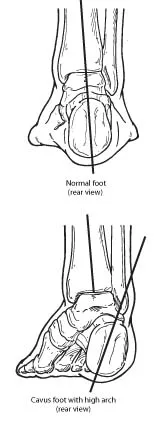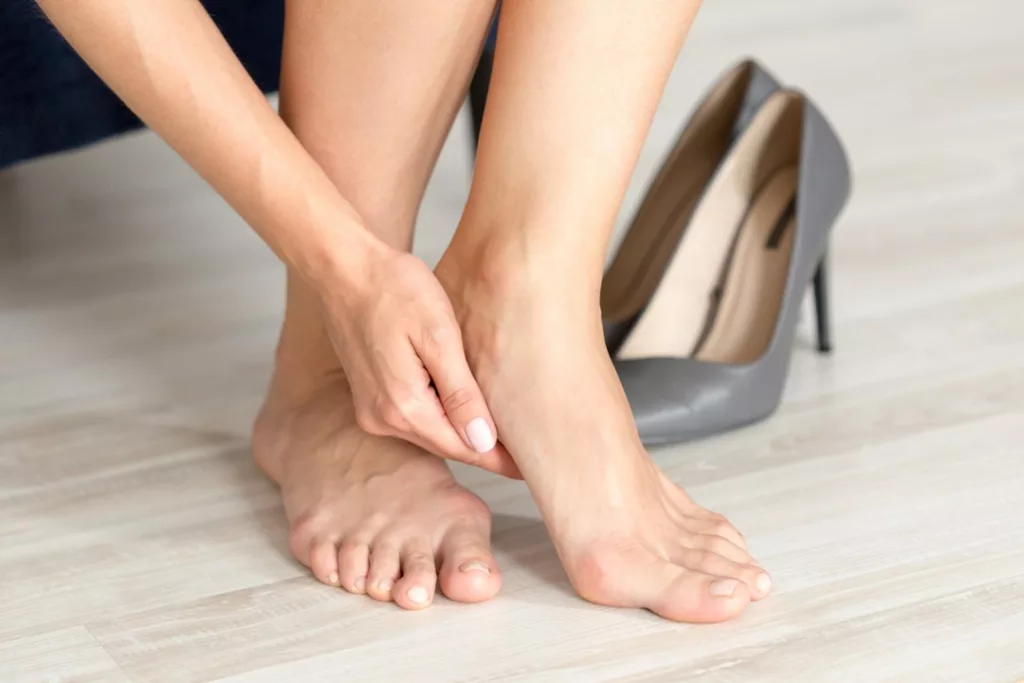Understanding Cavus Foot: Normal Foot vs. Cavus Foot
Cavus foot is a condition characterized by an unusually high arch in the foot, which can lead to an excessive distribution of weight on the ball and heel when walking or standing. This condition may result in various symptoms, including pain and instability, and it can affect one or both feet. Cavus foot can manifest at any age.
Causes of Cavus Foot (High-Arched Foot)
Cavus foot often arises from underlying neurologic disorders or other medical conditions, such as cerebral palsy, Charcot-Marie-Tooth disease, spina bifida, polio, muscular dystrophy, or stroke. Alternatively, some cases of cavus foot may be attributed to inherited structural abnormalities. It is crucial to obtain an accurate diagnosis as the underlying cause largely influences the course of the condition. When neurologic disorders or medical conditions are the root cause, the high arch tends to worsen progressively. In contrast, non-neurologic-related cases of cavus foot typically remain stable in appearance.
Symptoms of Cavus Foot (High-Arched Foot)
Cavus foot is readily identified by its visibly high arch, even while standing. Additionally, individuals with this condition may experience one or more of the following symptoms:
- Hammertoes (toes that are bent) Or Claw toes (toes clenched in a fist-like position)
- Calluses on the ball, side, or heel of the foot
- Pain while standing or walking
- Foot instability due to inward tilting of the heel, which can result in ankle sprains
Some individuals with cavus foot may also exhibit a condition known as foot drop, characterized by muscle weakness in the foot and ankle that causes the foot to drag when taking a step. Foot drop is usually indicative of an underlying neurologic condition.
Diagnosing Cavus Foot (High-Arched Foot)
The diagnostic process for cavus foot entails a thorough evaluation of the patient’s family medical history. A foot and ankle surgeon conducts a physical examination to assess the arch height and search for any signs of calluses, hammertoes, or claw toes. Muscle strength in the foot is tested, and the patient’s gait and coordination are observed. In cases where a neurologic condition is suspected, the entire limb may be examined. Additionally, the surgeon may analyze the wear pattern on the patient’s shoes. X-rays may be ordered to further assess the condition, and a referral to a neurologist for a comprehensive neurologic evaluation may also be recommended.
Non-Surgical Treatment
Non-surgical treatment options for cavus foot may include one or more of the following:
- Orthotic devices: Custom orthotic devices that fit inside the shoe can provide stability and cushioning to the foot.
- Shoe modifications: High-topped shoes offer ankle support, and wider-heeled shoes enhance stability.
- Bracing: The surgeon might suggest a brace to maintain foot and ankle stability, which can be particularly helpful in managing foot drop.
When Is Surgery Necessary?
In cases where non-surgical interventions fail to alleviate pain and enhance stability, surgery may be required to reduce pain, improve stability, and compensate for foot weakness. The choice of surgical procedure or combination thereof depends on the patient’s individual case. In situations involving an underlying neurologic condition, additional surgeries may be needed in the future due to the condition’s progression.
Why Choose a Foot and Ankle Surgeon?
Foot and ankle surgeons are recognized as the foremost experts in foot and ankle care. These doctors, also known as podiatric medicine practitioners (DPMs), occasionally referred to as “foot and ankle doctors,” possess specialized surgical expertise within the field of podiatry. Foot and ankle surgeons have received extensive education and training specific to the foot and ankle, surpassing that of other healthcare providers.
These specialists are equipped to treat a wide range of foot and ankle conditions. Ranging from simple to complex, in patients of all ages, including those with high-arched or cavus foot. Their comprehensive education and training qualify foot and ankle surgeons to perform various surgical procedures required to address cavus foot and related conditions.





